Filmmaker Profile: Deborah Stratman
This article provides an introduction to the films of Deborah Stratman, and the subjects and themes she explores through her work.
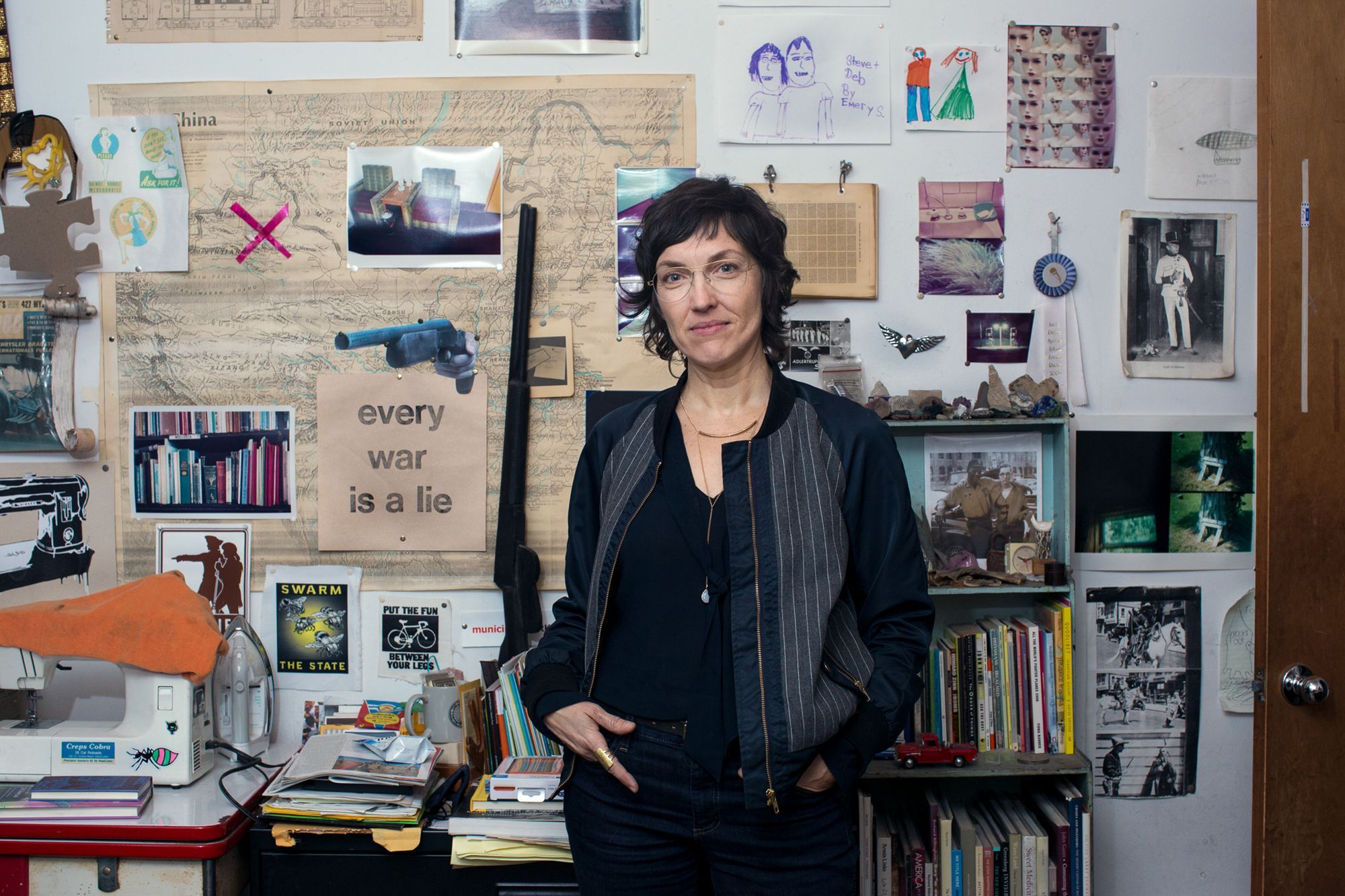
Born in 1967, Deborah Stratman is an American filmmaker and artist who participates in a form of experimental, and ethnographic, filmmaking. This article provides an introduction to her filmography, and the subjects and themes she explores through her films.
Stratman received her MFA from the California Institute of the Arts (CalArts). During her time there, she studied under the experimental filmmaker, James Benning, whose work often explores landscapes, time, and duration, and who Stratman often sites as an influence. For just about the past three decades, Stratman’s multifarious body of work has not only included films but also sculpture, photography, drawing, and sound installations.
Most of the films Stratman has created extend from an intersection between the avant-garde and documentary. In particular, many of her films are concerned with the ways in which our physical environment is entangled with the notions of surveillance, privacy, and, control. She is particularly interested in utilising the duality of sound, as a mode of control and resistance, to explore the environments featured in her films. Further to this, Stratman strives to divine a non-linguistic epistemology through her film’s distinct sonic landscape, something she describes as ‘a kind of knowing that is just as intellectual but is not tied to words’ (“Masterclass”).
I’ve compiled a list of three films by Stratman that I feel especially demonstrate this filmmaking sensibility for those new to her work. You can also find links to the films I mention at the end of this article, all of which are available to stream through Doc Alliance alongside a fascinating Masterclass delivered by Stratman herself. In addition, this article is also available in a video essay format which, as always, is now live on the Cinema Scholar YouTube channel and embedded below for your viewing:
So, without further ado, here is the list:
1: In Order Not to be Here (2002)
In thirty-three minutes, In Order Not to be Here offers a nocturnal portrait of contemporary suburban America––simply put, it is an urban landscape film. In particular, Stratman directs her camera at the infrastructure of these typically ‘white-collar communities’, and the ways in which fear-based desires––privacy, safety, convenience, and surveillance––demarcate their urban landscapes, both suburban and corporate (“Masterclass”). The film features such sites as convenience stores, artificially lit parking lots, gated communities, and drive-throughs, for about two thirds of the total running time. They are all evacuated in criminal anticipation. Most of these urban sites are held in prolonged static shots that, for all intents and purposes, could each double as the opening to a horror film––ominous spaces anxious in anticipation of something terrible soon to happen. Indeed, as Holland Cotter reviews, In Order Not to be Here feels like a ‘slasher film without the slasher’.
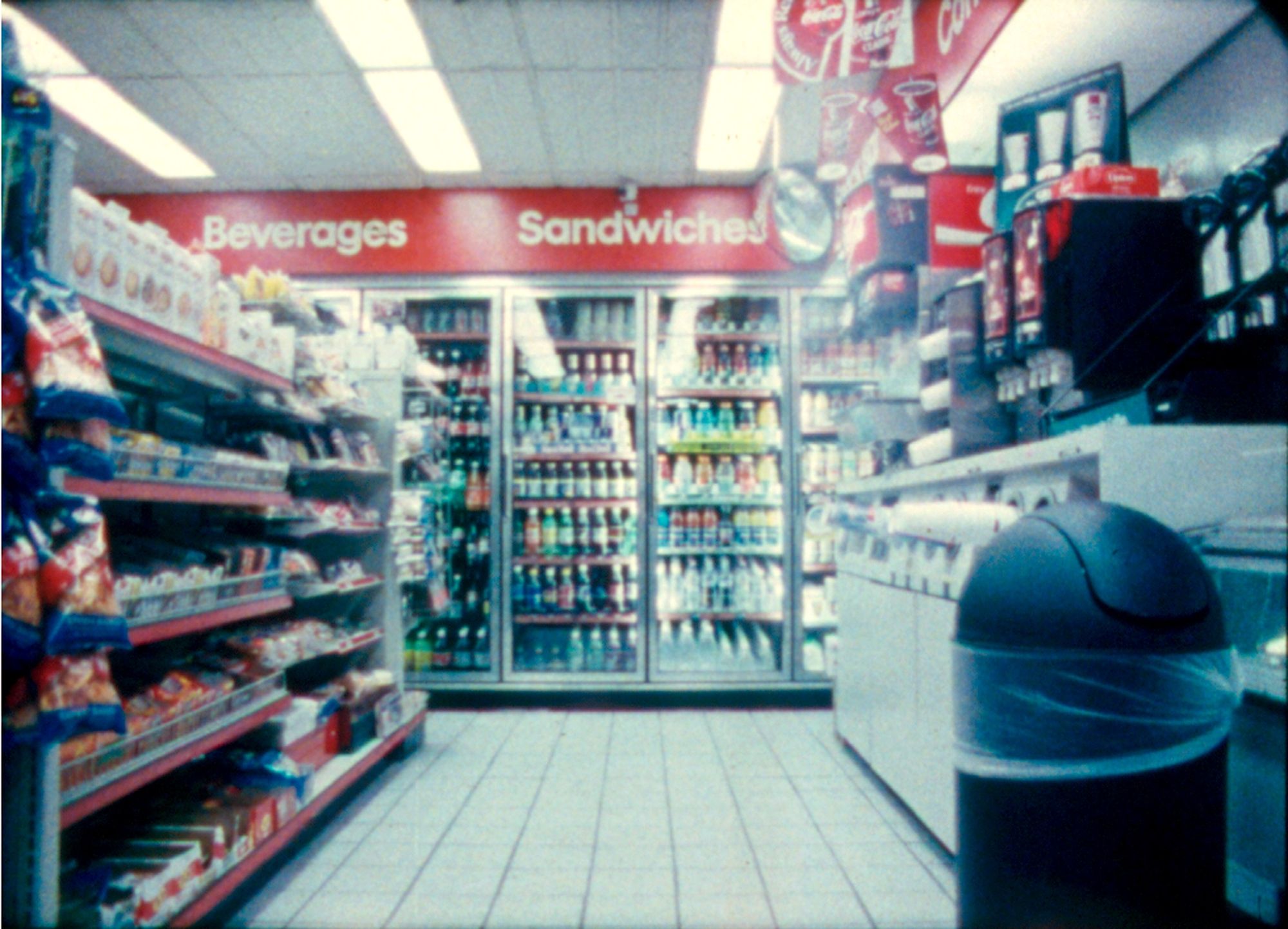
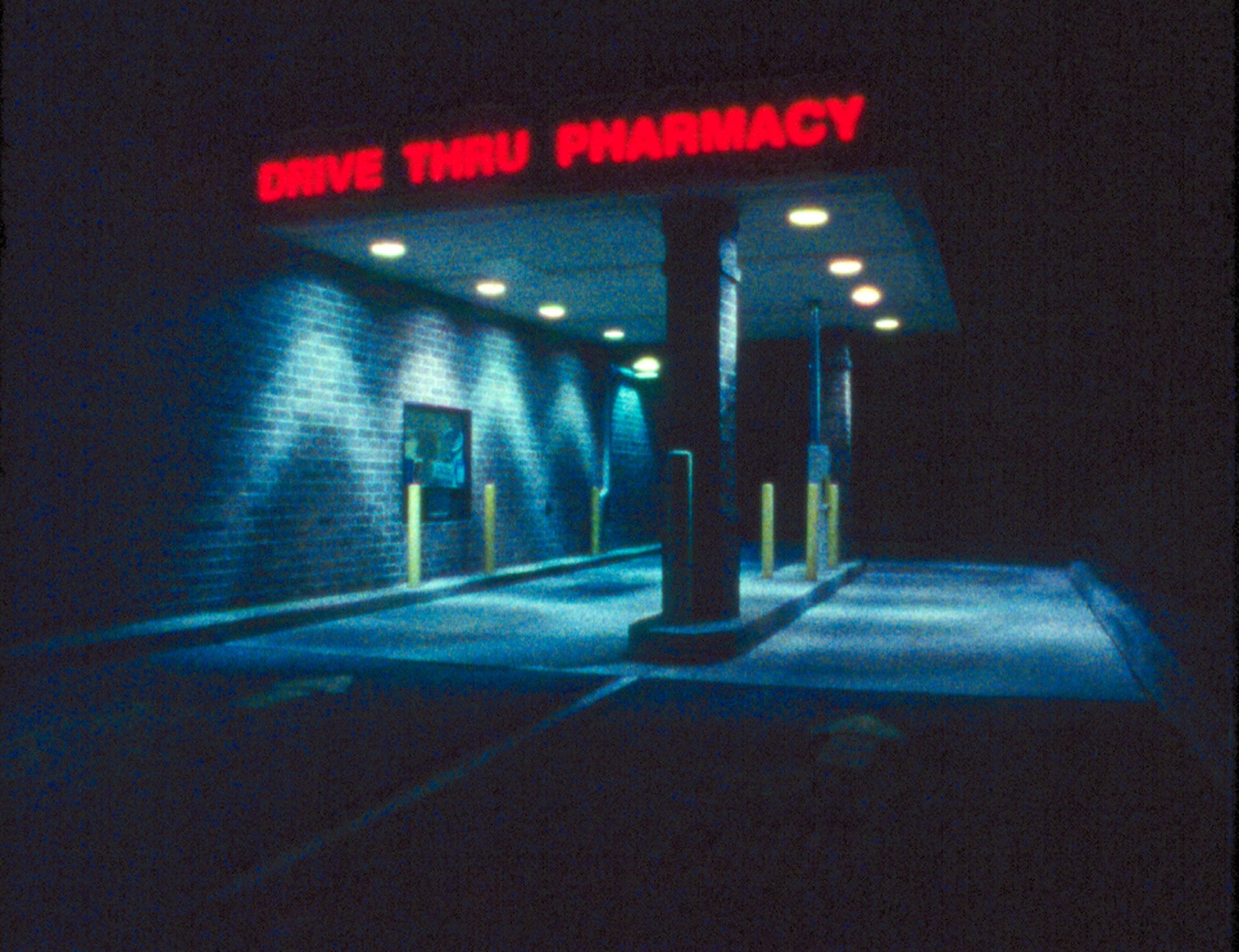
Stratman has referred to the rather oppressive build-up of these soulless sites as the establishment of an ‘omniscience of gaze’ (“Masterclass”). Yet, she also fosters an equally oppressive omniscience of sound through vertical montage, that is: conflict that arises between discontinuous image and sound. Stratman’s omniscience system trains the viewer to expect terror, yet this fear is never substantiated as no crime is ever visualised in these spaces. For instance, an early shot depicts a spotlight probing a house in a desperate search of some indiscernible purpose. Only the matter that falls before the focused beam of light is exposed, and the rest of the composition is plunged into comparative darkness, vulnerable to imminent illumination. A piercing sound buzzes alongside the scanning spotlight, concentrating the gaze and sound. This audio-visual distillation crystallises a pervasive mode of viewing and listening, and permeates the entire film.
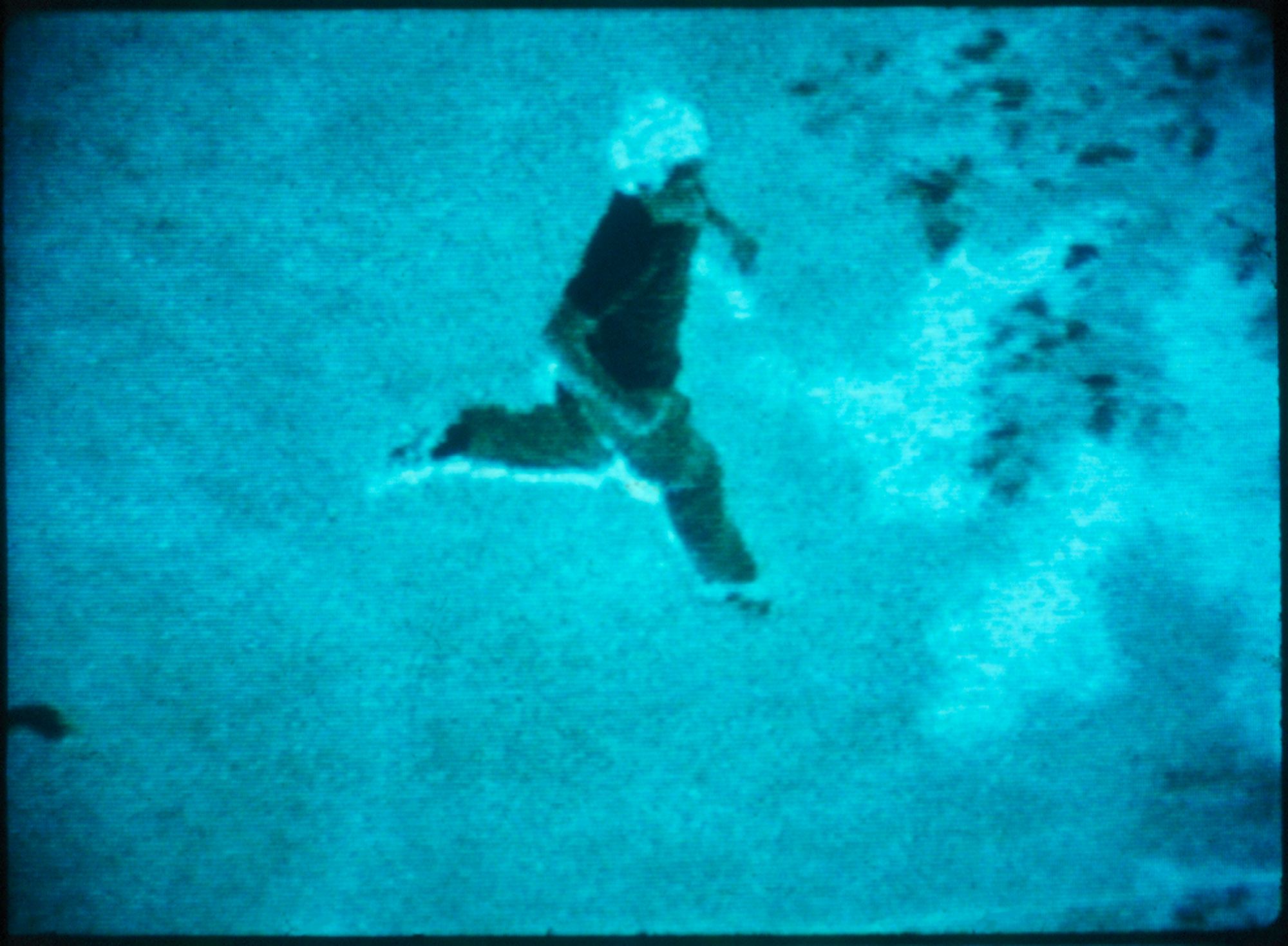
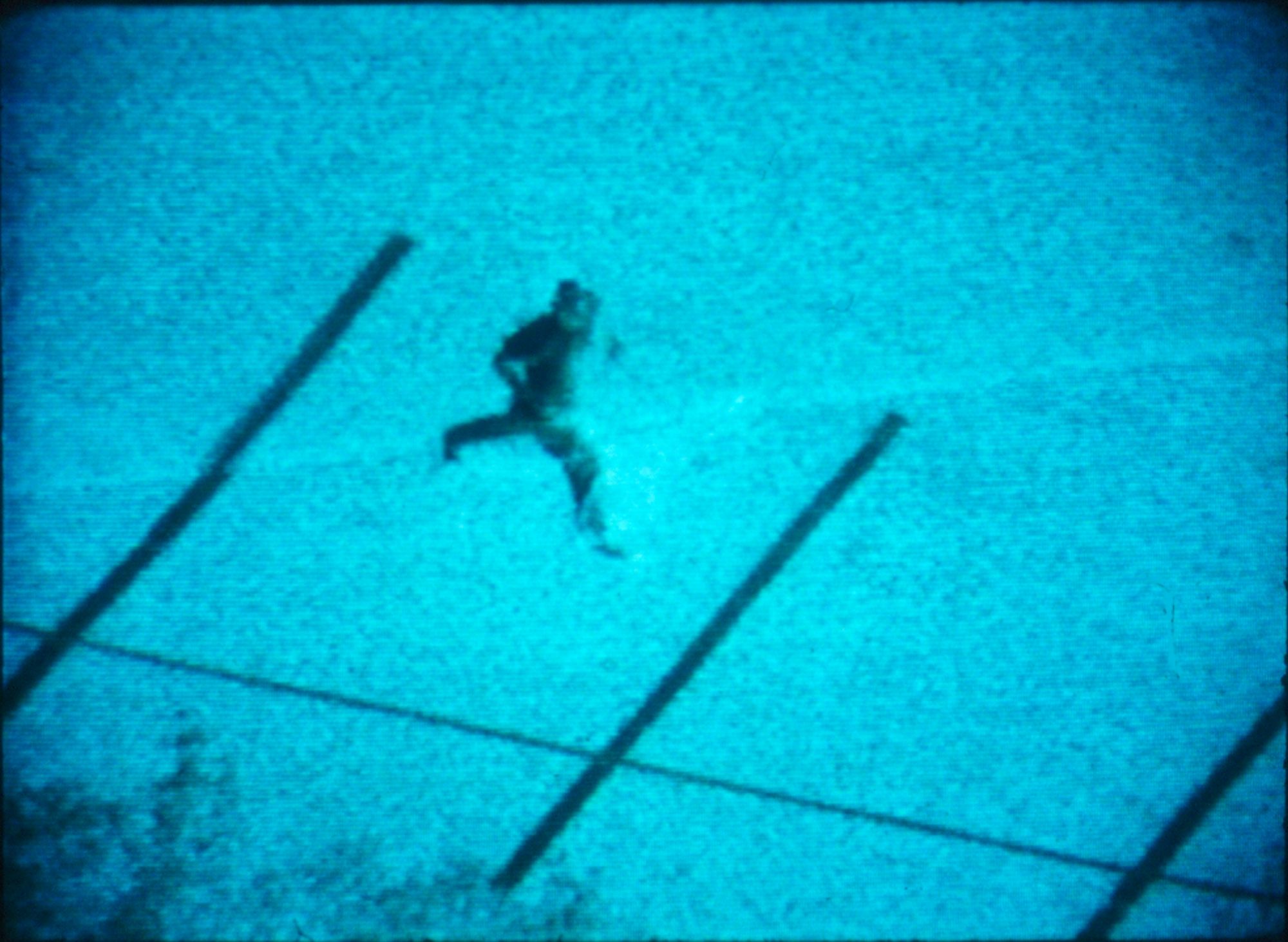
The film ends with an extended sequence depicting a man trying to evade a helicopter hunt on foot. The hunt was staged: Stratman hired an actor, Joaquin de la Puente, to play the ‘running man’ and charted his escape route (“Masterclass”). Suzanne Wise attributes the cathartic import of the sequence to the curious conference between Hollywood-style action and experimental abstraction (2). Anonymised by infrared, we cannot identify the man or the reason behind his pursuit, and the unrelated sounds of news anchors and neighbour testimonies detailing a different crime scene––suicidal arson––do not assist either. Yet, to a viewer trained in the tropes of Tinseltown, his escape is not only indicated, but desired. Indeed, this sequence represents many things, Stratman writes: ‘I wanted him to be the guy we're rooting for to shake the overbearing panoptica of contemporary society. I wanted him to be the human who is missing from the rest of the film. The one we're placing all our bets on to make it out of our hyper-controlled environments’ (“Interview” 18).
2. O'er the Land (2009)
In fifty-two minutes, O’er the Land cogitates on a kaleidoscope of pressing issues present in the sociocultural environment of contemporary America. They range, as Stratman identifies, from nationhood and its militarisation, to ‘wilderness and consumption’ (“Masterclass”). These assorted topics converge in the film’s overall rumination on freedom. In particular, Stratman examines how ‘increasingly technological’ interpretations of ‘manifest destiny’[1] inform the meaning of freedom, as defined by the national psyche (“Masterclass”). However, she also provides an alternative, metaphysical notion of freedom that is rooted in transcendent self-overcoming.
Stratman notices a case of mistaken ontology in the way Americans have come to define freedom. Indeed, she observes that freedom is often understood as ‘ownership’––of land, of its history, and of the material rights inscribed therein––and, therefore, ‘control’ (Stratman, “Masterclass”). O’er the Land explores this observation by arranging a montage of various sights, such as: historical re-enactments, the various processions of a football game, and gun enthusiasts exercising their Second Amendment rights at a shooting range. These sights are seemingly dissociated, yet all represent equally ritualistic and ingrained iterations of American freedom that see its citizenry congregate through controlled, technologically defined, parameters. There is no overarching narration to connect these slices of life, but certain sequences are accompanied by disembodied voices that describe the particulars contained within that fragment of the montage.
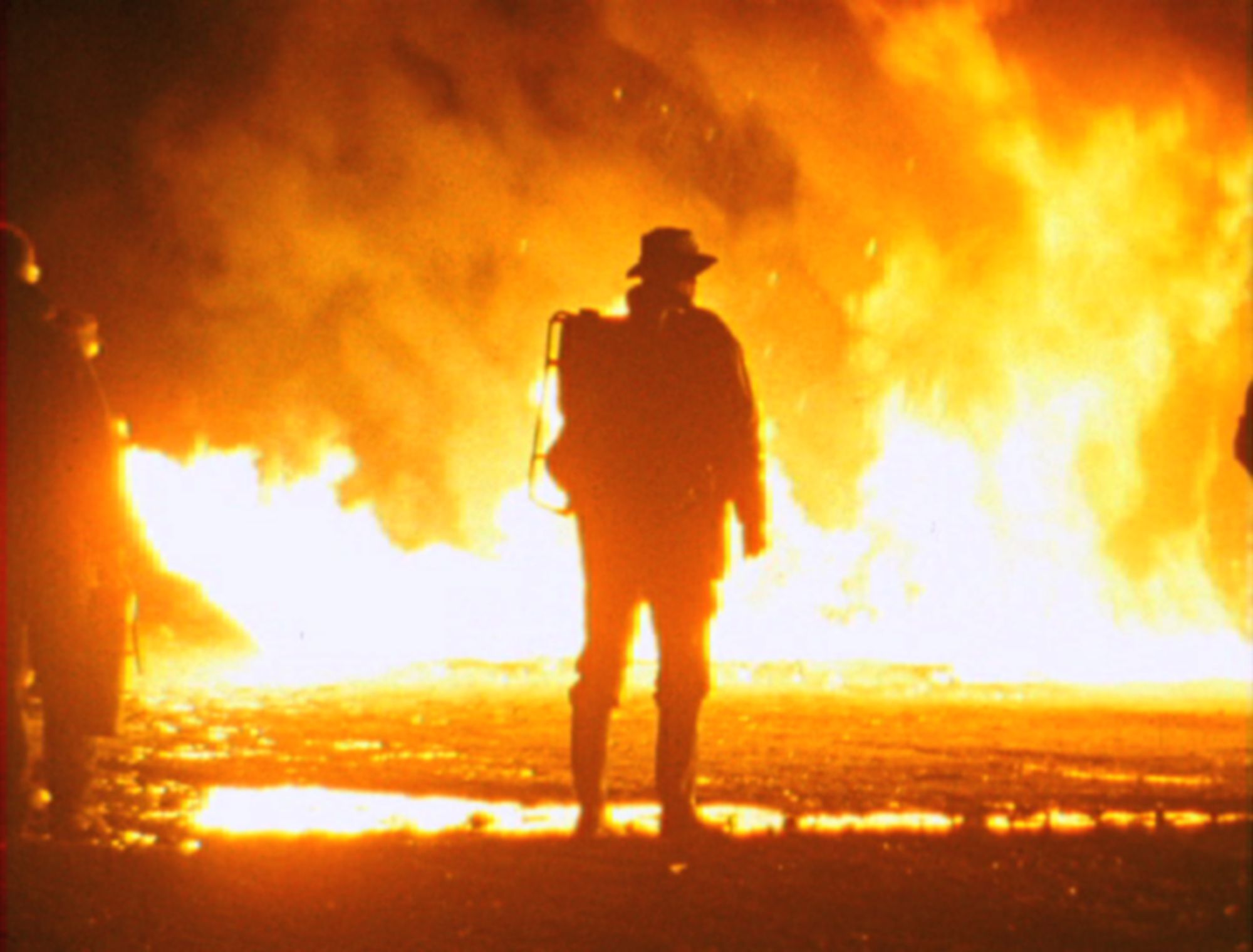
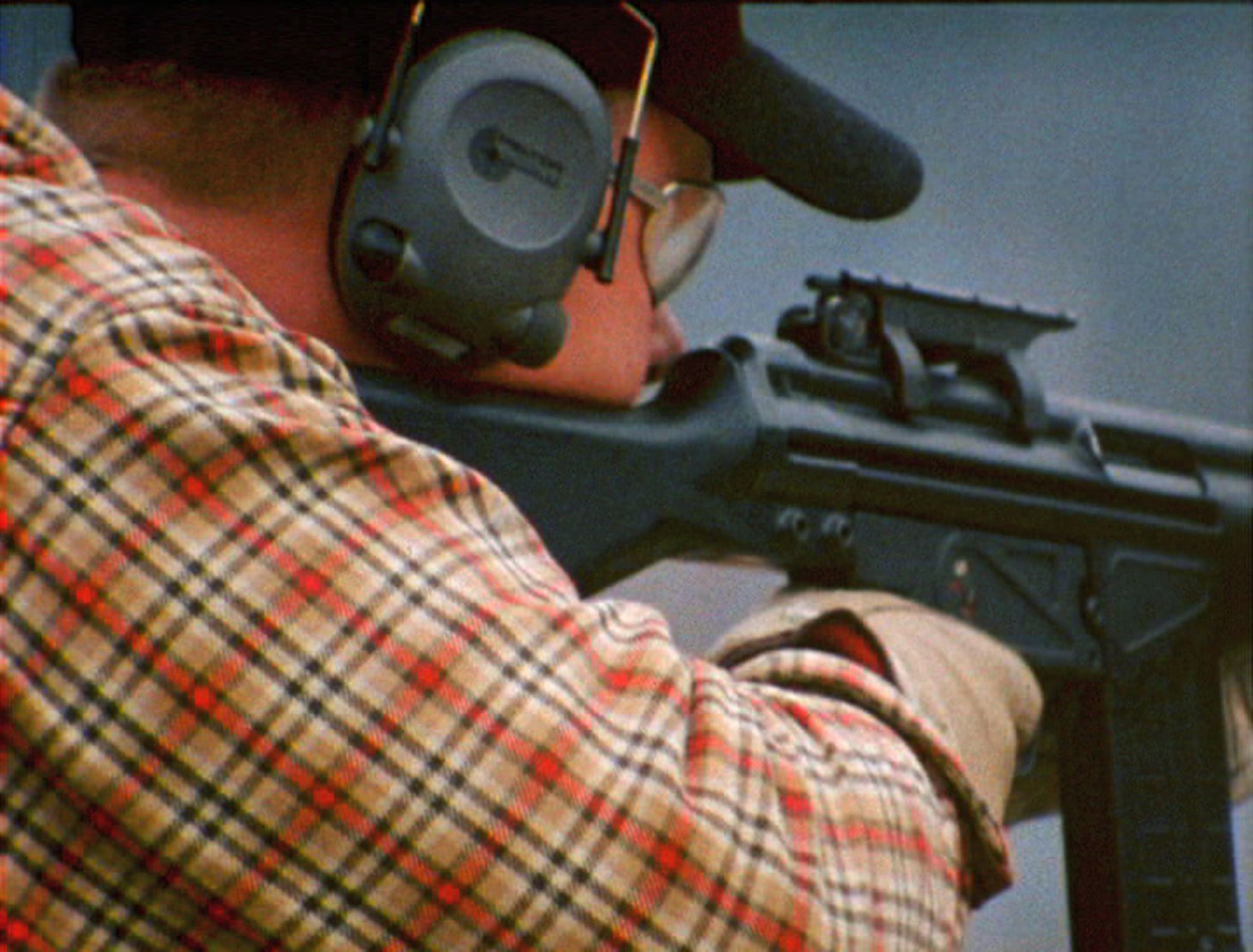
Natural reunion is prominently implicated in the film’s aspirations for freedom. This alignment is made potent when Stratman offers a radical, but no less violent, alternative to the formulation of freedom-as-control by featuring the recounted survival story of Ltd. Col. William Rankin: A pilot who in 1959, was forced to eject without a pressure suit from his fighter jet at 48,000 feet––well beyond breathable atmosphere––over a cumulonimbus thunderstorm cloud, wherein he was then trapped aloft for forty-five minutes by the constant updrafts. The following distillation particularly draws out the harrowing violence of the experience:
The air outside was close to seventy below, and all I had on was my summerweight fly suit…I decided to eject…I felt a wall-like blast of air and then my whole body became a freezing, expanding mass of pain. The first shock was the cold, I felt like a chunk of beef tossed into a deep freeze. All the exposed parts of my body stung, I felt like I was on fire, and then the burning turned to numbness. I felt my abdomen bloating until I thought it would burst open. I looked like I was nine months pregnant. My eyes felt like they were being ripped out of their sockets. My head was splitting apart. I had severe cramps all over… I found out later that I bled from my eyes, ears, nose, and mouth as a result of decompression ruptures… (O’er the Land)
To Stratman, this story represents a ‘transcendent parable’, which demonstrates the relinquishment of control that she deems essential in the metaphysical pursuit of freedom (“Masterclass”). Necessarily, at the sublime mercy of the atmosphere, Rankin’s plummet to earth imposed the complete release of corporeal and emotional control. Indeed, Stratman clarifies that her personal notion of freedom is ‘not technological’, and instead involves ‘something much more ephemeral…a letting go of ego…being subsumed by something much larger than [oneself], or a transcendent sort of freedom that is not tied to ownership’ (“Masterclass”).
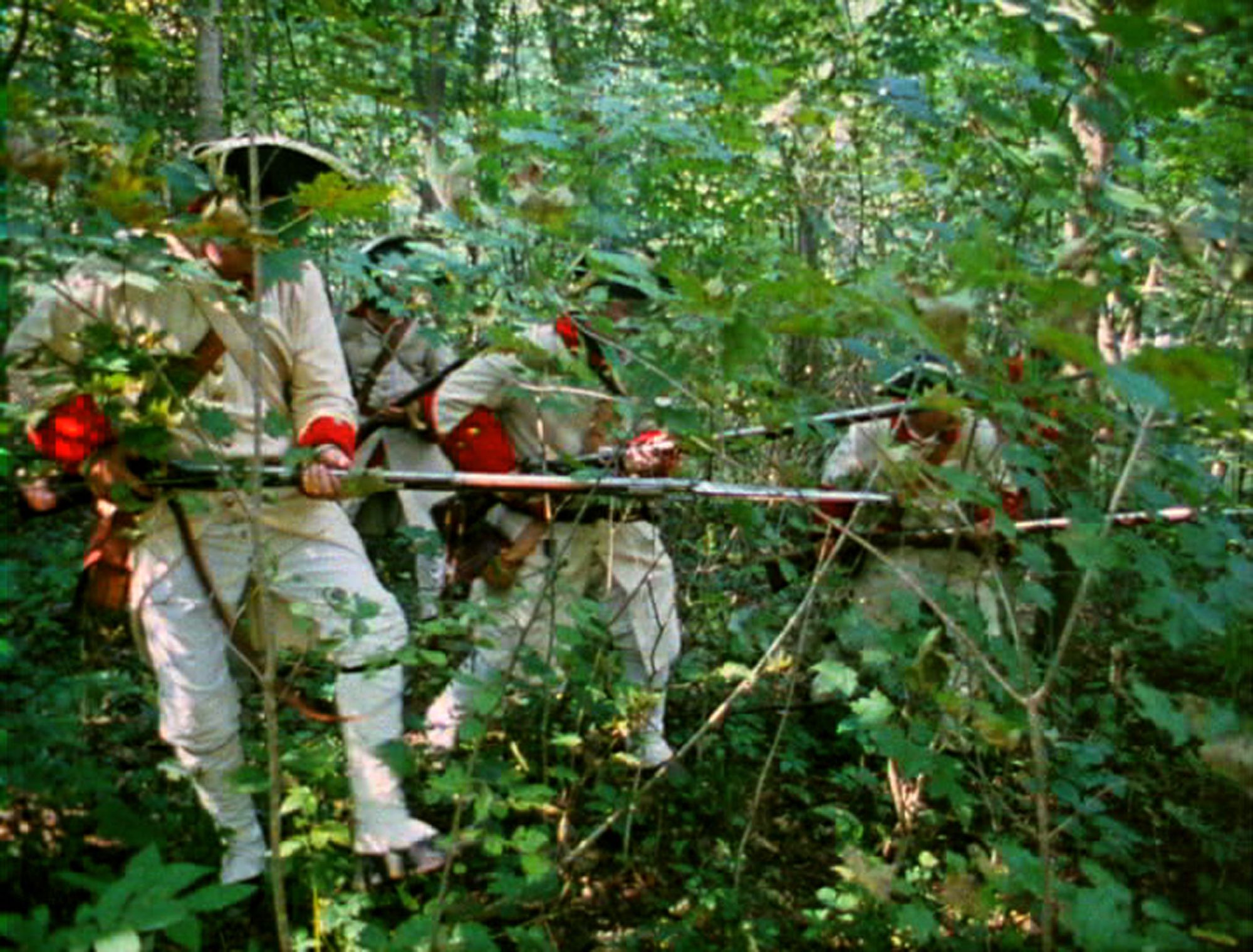
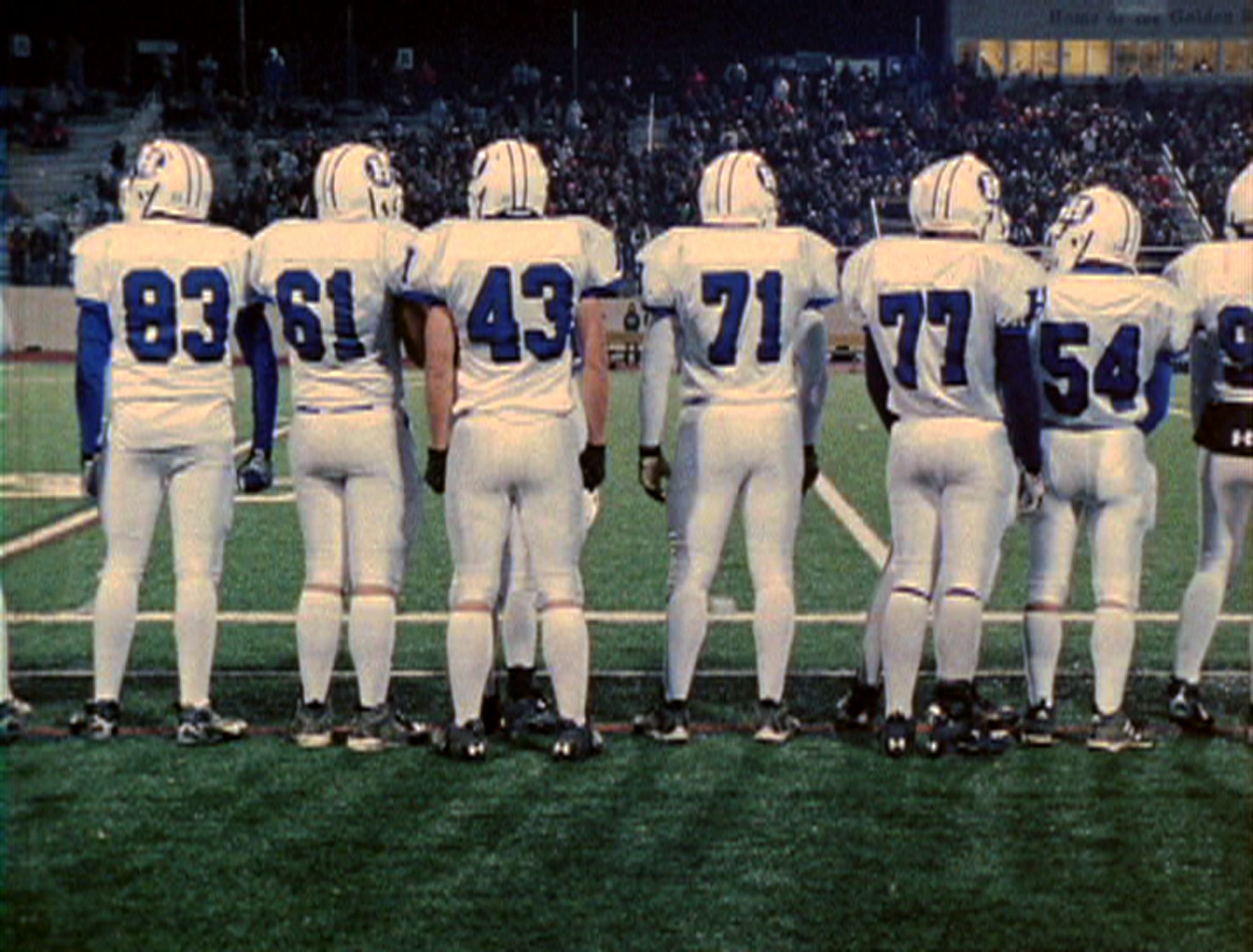
As we have seen, this alternative vision of freedom is hardly a harmonious one. Rather, the relinquishment of control it entails is violent, even more so than the iterations of freedom that maintain said control otherwise featured in the film. This juxtaposition suggests that the violence represented by Rankin’s ordeal is needed to break out of the violence that has been normalised by American society. This is a radical proposition, one that encapsulates the severity of the national notion of freedom––a vicious cycle of ownership and thus defence––and the brutal process required to overcome it.
3. Hacked Circuit (2014)
One of Stratman’s more recent films, Hacked Circuit stages the Foley sound production process, exposing along the way the many layers of sonic artifice and regulation of profilmic space contained both within the film as a whole, and within the acclaimed film being foleyed, Francis Ford Coppola’s The Conversation (1974). The film begins in the evening on a Californian street and, in a one-shot track, the camera winds inside a Foley studio and then loops back outside, assuming its initial position on the street. As the film unfolds, the relationship between the image and sound is consistently destabilised. Sounds that once seemed to emanate from diegetic sources––that is, elements contained within the world of the film––are later revealed to be non-diegetic, and vice versa.
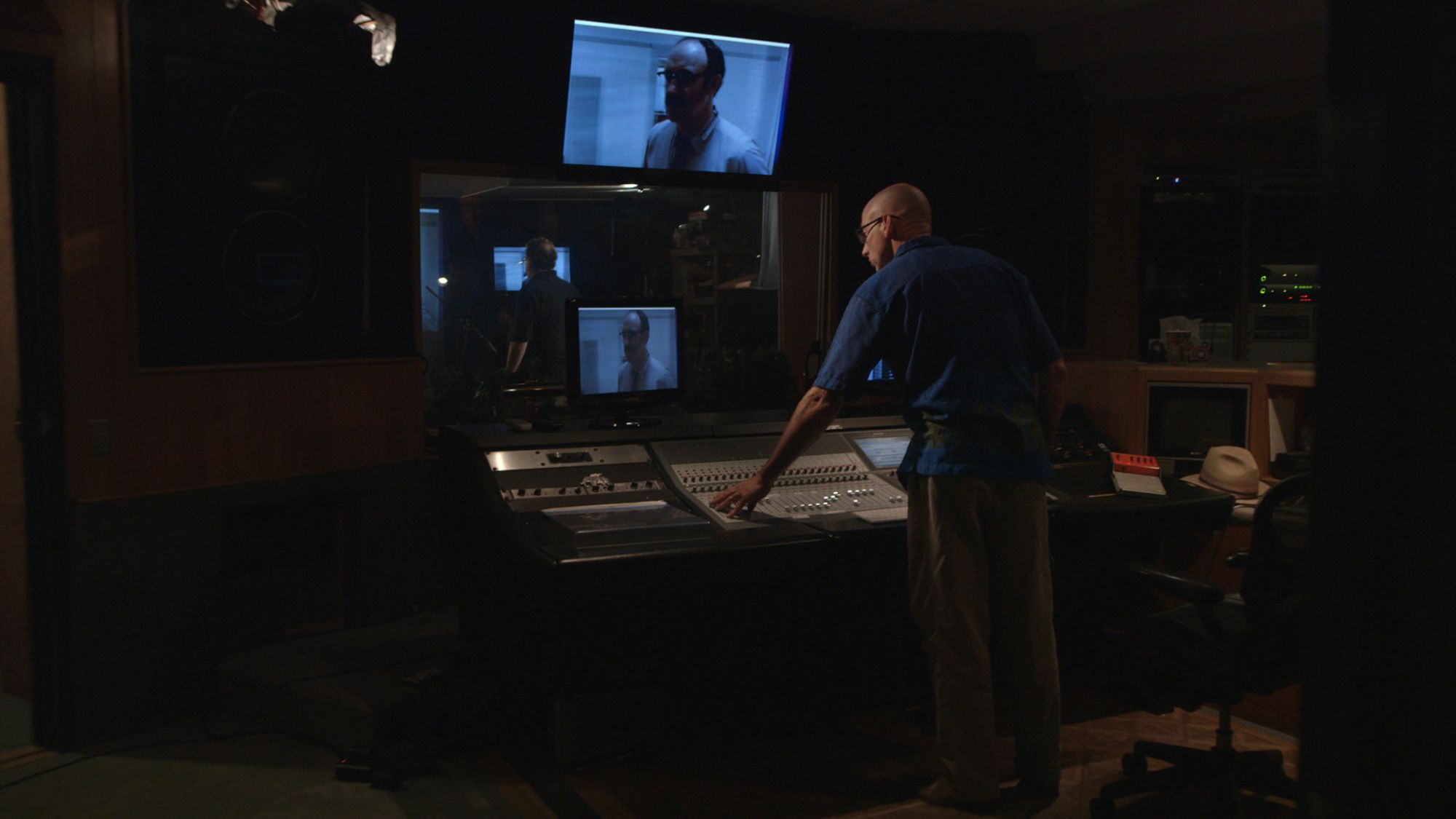
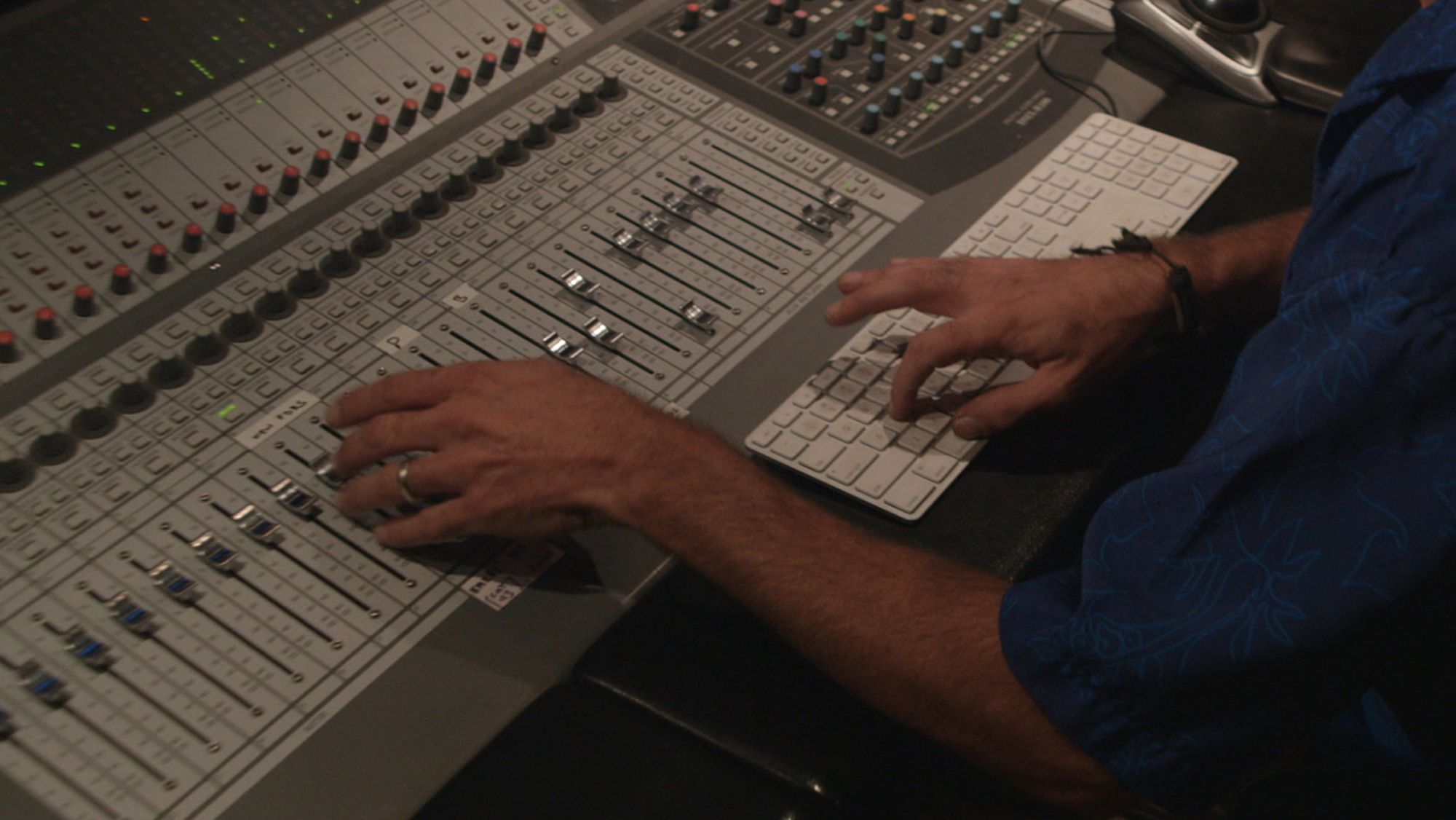
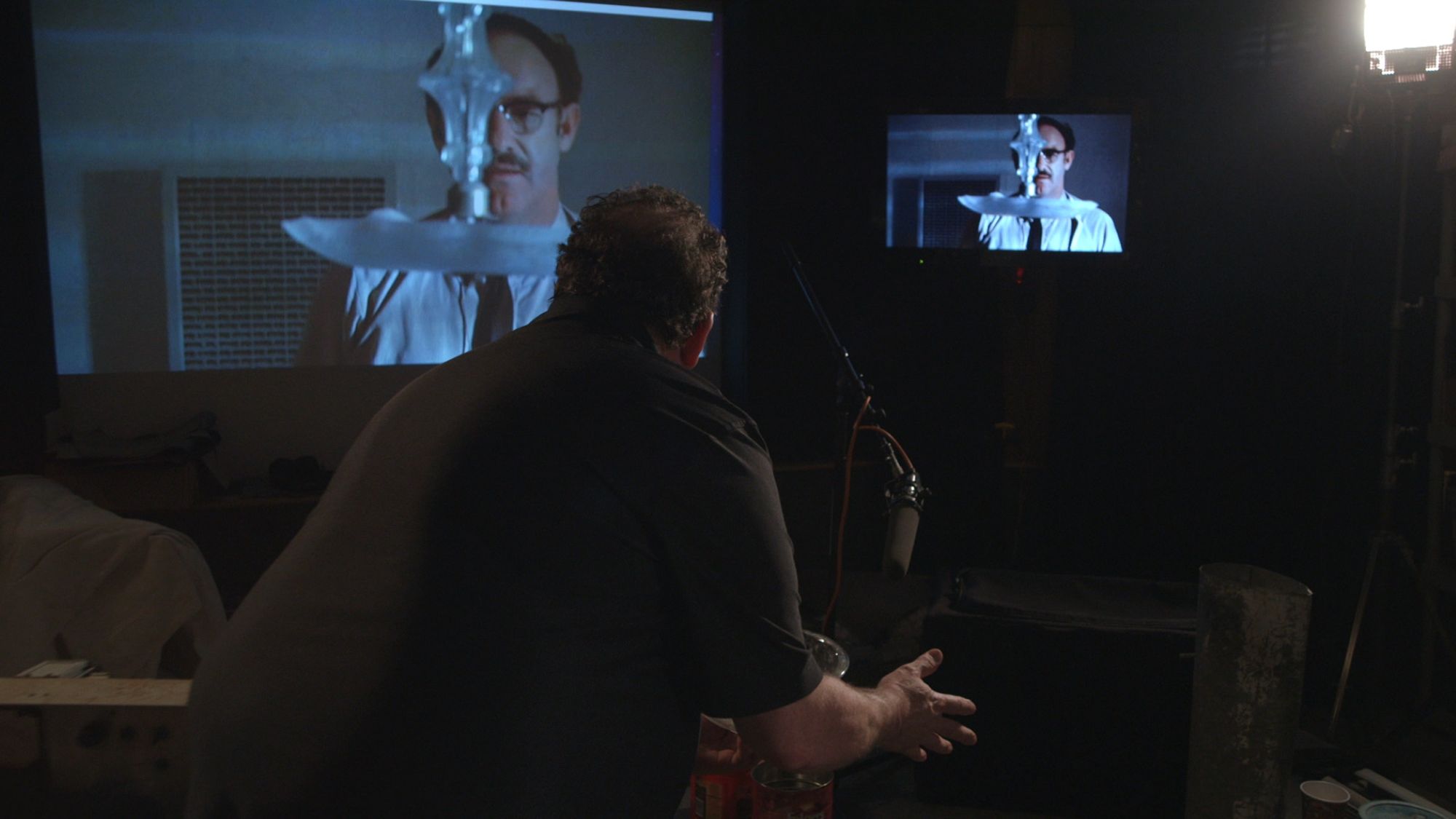
Notably, The Conversation also utilises sound to induce a state of paranoia. In this film, Gene Hackman plays a surveillance expert, Harry Caul, who covertly records the conversations of various people for his clients. The sequence being foleyed is the final moment of paranoid exacerbation wherein Caul tears apart his apartment in search for a bug he believes has been planted inside. A second filmic reference is also made towards the end of Hacked Circuit: sonic quotations from Enemy of the State (Tony Scott, 1998)––a playful, action-packed homage to Coppola wherein Hackman similarly plays a surveillance expert––overlay the visuals of the winding camera. Together, these filmic references forge an analogous relationship between the invisible stagecraft of Foley sound production––particularly, its destabilising empiricism––and the omnipresence of governmental surveillance. The sonic exposition crafted to facilitate this analogy functions to resist the formation of a totalizing filmic whole, ambiguating the integrity of the audio-visual image instead.
Notes
[1] In summary, manifest destiny ‘refers to the 19th-century doctrine that the expansion of the United States across the continent was inevitable, justified, and benevolent’ (Kuchera).
References
· Cotter, Holland. “ART IN REVIEW; George Kimmerling Deborah Stratman.” The New York Times. The New York Times Company, Feb. 7 2003.
· Kuchera, Carolyn. "Manifest Destiny". Oxford Bibliographies in “American Literature”. Oxford UP, last modified 28 Jun. 2016.
· Stratman, Deborah. “The Art of Looking: an Interview with Deborah Stratman.” Interview by Mike Hoolboom. Millennium Film Journal, no. 50, 2008, pp.13 – 20.
· Stratman, Deborah. “Ji.hlava IDFF Presents: Masterclass – Deborah Stratman.” Jihlava Industry Program, Jihlava International Documentary Film Festival, Oct. 27 2014, Jihlava. Available to view here.
· Wise, Suzanne. “George Kimmerling & Deborah Stratman at Momenta Art.” Pythagoras Film. Pythagoras Film, Originally published by Williamsburg Quarterly, 2003, pp. 1 – 3.
Films Cited:
The Conversation (Francis Ford Coppola, 1974)
Enemy of the State (Tony Scott, 1998)
Hacked Circuit (Deborah Stratman, 2014)
In Order Not to be Here (Deborah Stratman, 2002)
O’er the Land (Deborah Stratman, 2009)

